#vincenzo foppa
Photo
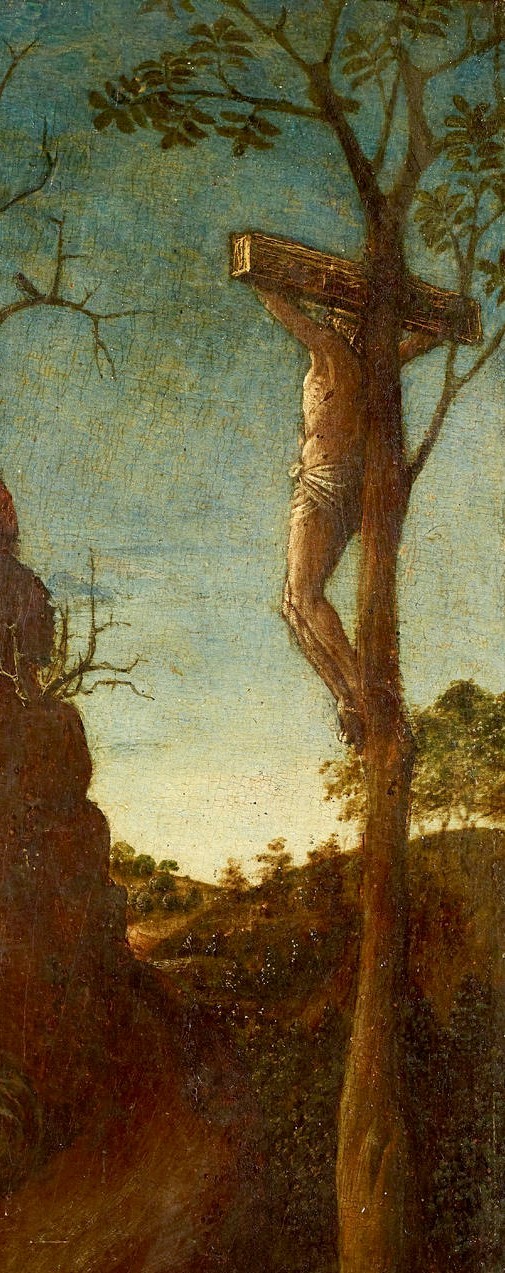
Vincenzo Foppa - Saint Jerome. Detail. 1485 - 1490
67 notes
·
View notes
Video
Saint Mark por █ Slices of Light ✴ █▀ ▀ ▀
Via Flickr:
Saint Mark on the ceiling fresco in the Hall of Nuns at San Maurizio. Milan; March 2017 Olympus E-M1
0 notes
Text

TÍTULO: La Virgen y el Niño con los santos Juan Bautista y Juan Evangelista
AUTOR: Vincenzo Foppa
FECHA: 1485
MATERIAL Y TÉCNICA: Fresco separado transportado sobre lienzo
DIMENSIONES: 192x173 cm
INVENTARIO: 999
El fresco, fechado el 10 de octubre de 1485, constituía la puerta superior de la sacristía de Santa Maria di Brera y fue retirado antes de 1884. La arquitectura, en la que se inserta la Virgen, constituía la parte superior de una decoración más amplia, que incluía los lados de la puerta, dos pilastras pintadas, rematadas por capiteles. La disposición arquitectónica del fresco recuerda los prototipos de Alberti y Mantegna. Como en San Sebastiano, Foppa se concentra en el efecto escenográfico de la composición, acentuando aquí los valores del ilusionismo perspectivo gracias al escorzo del "subinsu": la Virgen se apareció al devoto como si asomase a una especie de balcón, que a su vez estaba presidido por un arco monumental tras el cual se divisaba un espacio abierto; la cornisa saliente, la alfombra que cubre el parapeto y la visión del arco reforzaron el efecto trompe l'oeil, tan eficaz que fue retomado por Bergognone, unos años más tarde, en un fresco en el crucero de la Certosa de Pavía.
La bóveda lacunar, los medallones y el friso de inspiración anticuaria recuerdan los arcos de triunfo de la época romana, tomados como modelo en aquellos años por Bramante, pero también, por ejemplo, por Leon Battista Alberti en la fachada de Sant'Andrea en Mantua.
Información e imagen de la Pinacoteca de Brera.
6 notes
·
View notes
Text

Sharon Tate
Martyrdom of Saint Sebastian, circa 1489. Vincenzo Foppa (Italian, 1427/30 - circa 1515/16).
4 notes
·
View notes
Photo

Venerdì 31 marzo alle ore 20.30 si terrà la rievocazione processionale dello #stendardo di Orzinuovi ” opera di Vincenzo Foppa . La processione effettuerà il seguente tragitto: partenza da oratorio Jolly, via XXV Aprile, via Cavour, piazza Vittorio Emanuele II, sagrato parrocchia S.M. Assunta, con benedizione stendardo, piazza Vittorio Emanuele II, piazza Garibaldi, porta s. Andrea. #Orzinuovi https://www.instagram.com/p/CqILHkft_t_/?igshid=NGJjMDIxMWI=
0 notes
Photo

A “mother and child” theme: clockwise, from top left: “Madonna and Child,” circa 1480, by Italian artist Vincenzo Foppa; detail of a photograph by William McFarlane Notman of a Native American mother with her baby in a papoose, 1887; “Mother and Child,” 1812, terracotta sculpture by Italian artist Bartolomeo Pinelli; and my own photograph of a real jeep carrying a toy jeep attached to the back end. I don’t know about you, but these jeeps look like mother and child to me too! #mother #child #motherandchild #jeeps #arthistory https://www.instagram.com/p/CgPo_RwFllx/?igshid=NGJjMDIxMWI=
0 notes
Text

The Young Cicero Reading by Vincenzo Foppa
#vincenzo foppa#cicero#reading#rome#ancient rome#roman#art#history#europe#european#books#romans#antiquity#ancient
11 notes
·
View notes
Text

Vincenzo FOPPA,
Portrait of Giovanni Francesco Brivio
1495-99
Tempera on panel, 47 x 37 cm
Museo Poldi Pezzoli, Milan
Giovanni Francesco Brivio era membro di una famiglia nobile milanese che svolse un ruolo importante alla corte degli Sforza.
0 notes
Text

Vincenzo Foppa, Martyrdom of St. Sebastian, c. 1485-90
17 notes
·
View notes
Photo

Vincenzo Foppa - Saint Jerome. 1485 - 1490
41 notes
·
View notes
Photo
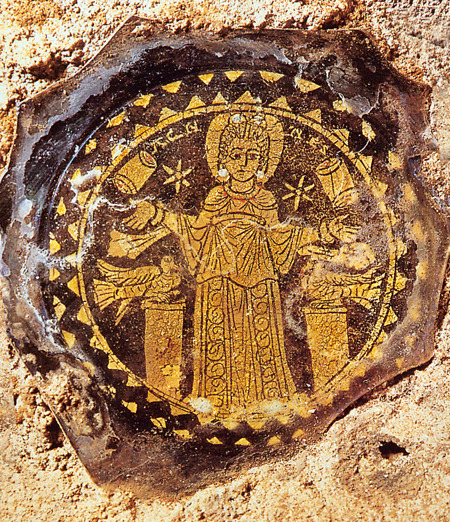

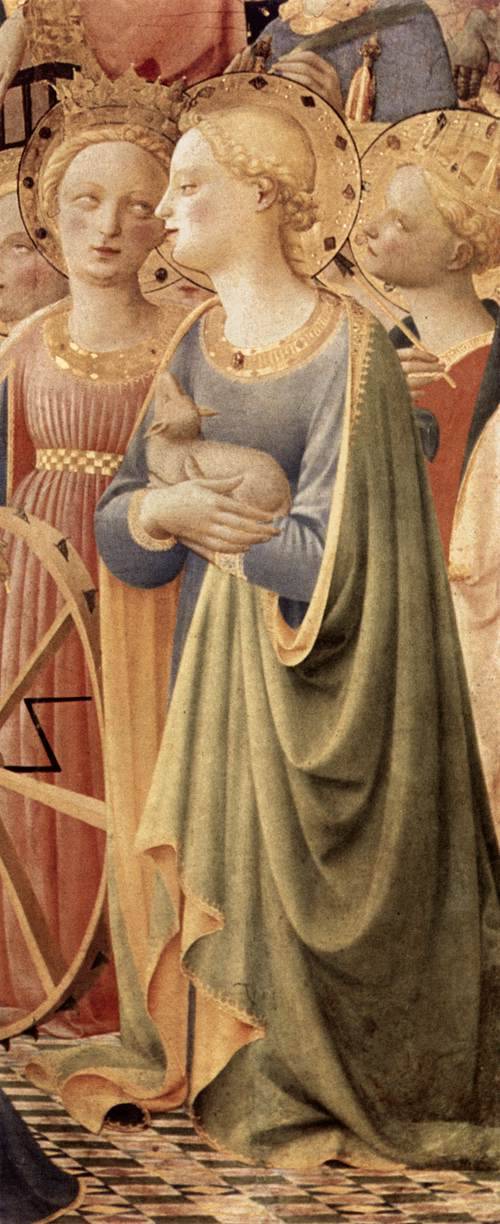
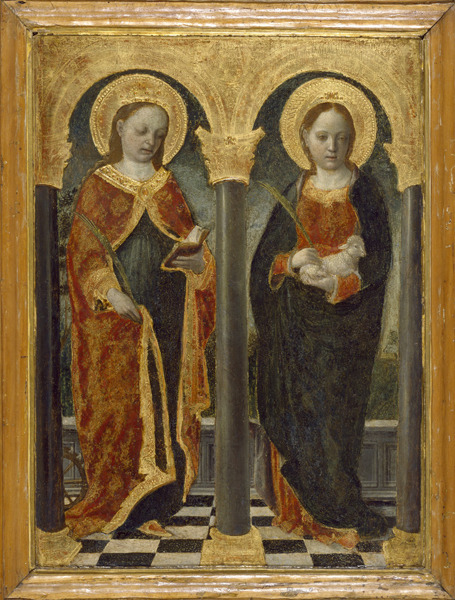
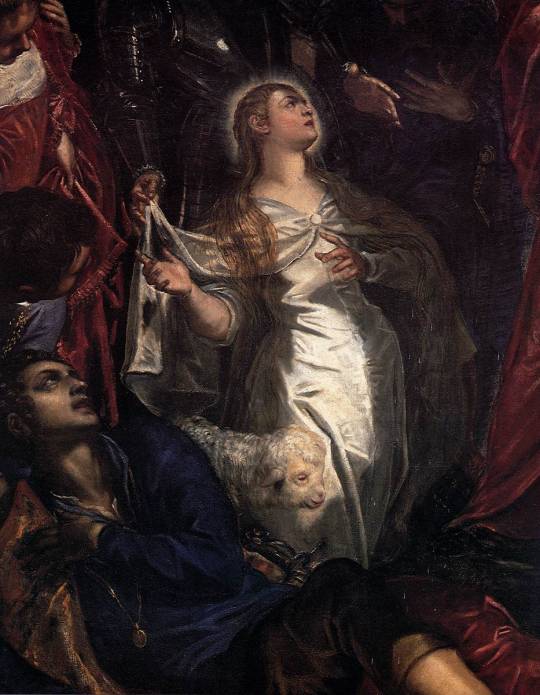

By Ioannis Tzortzakakis
21 January is the feast day of Saint Agnes (c. 291 - c. 304) in the Roman Catholic Church and has been venerated since the fourth century. She became a martyr at an early age (at 12 according to St. Ambrose and at 13 years old according to St. Augustine) in the years of the Emperor Diocletian, the years of the Christians’ prosecution. She martyred, apart from having confessed being a Christian, because she refused to be married and wanted to retain her virginity and purity; a Christian archetype for young girls.
Her name means “pure” in Greek, and maybe thus the iconographic association of the lamb; however, most probably, “Agnes” sounds like the Latin word of “lamb” which “agnus”. Agnus Dei (Lamb of God). This same lamb reference has likely produced the tradition of the Blessing of Lambs on St Agnes’s Day.
She is also depicted the martyr’s palm. The iconographic element of palm derives from the Book of Revelation.
They were wearing white robes and were holding palm branches in their hands. (Book of Revelation 7:9)
Yet, Duccio, for example (see picture above), portrays her holding a cross. It is the cross of martyrdom.
Whoever does not take up their cross and follow me is not worthy of me. Whoever finds their life will lose it, and whoever loses their life for my sake will find it. (Matthew 10:38-39)
Further reading
Jacobo de Voragine, William Granger Ryan (Translator), Eamon Duffy (Introduction). “Saint Agnes, Virgin.” The Golden Legend: Readings on the Saints, Princeton University Press, 2012, pp. 101–104.
.
Saint Agnes, Catacomb of Pamphilus, Rome, 4th Century.
Duccio di Buoninsegna, Maestà (detail), 1308-11, Tempera on wood, Museo dell’ Opera del Duomo, Siena.
Fra Angelico, Coronation of the Virgin (detail), 1434-35, Tempera on panel, Musée du Louvre, Paris.
Vincenzo Foppa, Saints Agnes and Catherine of Alexandria, c. 1460, tempera and gold leaf on wood panel, The Walters Art Museum, Baltimore.
Tintoretto, The Miracle of Saint Agnes (detail), c.1577, oil on canvas, Madonna dell’ Orto, Venice.
Domenichino, Saint Agnes, c. 1620, Oil on canvas, Royal Collection, Windsor Castle.
#saint agnes#st agnes#st. agnes#Roman Catholic Church#Rome#St. Ambrose#St. Augustine#Emperor Diocletian#prosecution#iconography#Maestà#Duccio#Fra Angelico#Vincenzo Foppa#Tintoretto#The Miracle of Saint Agnes#Domenichino
108 notes
·
View notes
Text

La Virgen con el Niño y el ángel del pintor bresciano Vincenzo Foppa.
4 notes
·
View notes
Text
HalloWeek, Italian mysteries: day 3, the Horned Madonna of Portinari Chapel

Located inside the Basilica of Sant’Eustorgio, Portinari Chapel is an outstanding example of Renaissance architecture in Milan, replete with a handsome dome, an ornate marble sepulcher adorned in bas-relief, and rich frescoes that include… a depiction of Mary and Jesus with devil horns? Indeed. But just like the story that inspired the fresco, this image is not quite what it seems.
Portinari Chapel was built from 1462 to 1468 and was consecrated to St. Peter of Verona, whose head rests in the elaborate marble shrine that serves as the chapel’s focal point. Also known as St. Peter Martyr, Peter of Verona was a Dominican friar who spearheaded the Inquisition in northern Italy in the early 13th century, at the height of the Catholic Church’s persecution of Cathars. He was famous for his persuasive sermons and proselytizing among the Cathars of Lombardy and neighboring regions.
One such story involved St. Peter of Verona seeking to “win back” an eminent man who had converted to Catharism after seeing the Madonna at a Cathar meeting. Determined to get to the bottom of this, St. Peter attended a meeting of the same group and saw the Holy Mother and child but - thanks to his unerring faith - saw also that they bore horns, revealing that this was actually the devil in disguise. Thus, he offered the false apparition a piece of sacramental bread, saying, “If you are the Mother of God, adore your Son!” The devil fled and as a result, all the Cathars present returned to Catholicism.
The frescoes of this and the other events of the life of St. Peter of Verona were painted by Vincenzo Foppa. After years of neglect, they were rediscovered in the late 19th century, and restored in the early 20th century.
(original source: Horned Madonna of Portinari Chapel - The odd depiction of the Virgin Mary and baby Jesus is rooted in the Catholic Church's eradication of Catharism)
day 1
day 2
day 4
day 5
day 6
day 7
bonus
#spooktober#halloweek#made in italy#milan#art#italian renaissance#st. peter of verona#st. peter getting s**t done#ok but why is evil baby jesus giving us the side eye#I don't think you're in the right position to judge anyone Satan
10 notes
·
View notes
Text
06 Works, Today, February 15th, is Saints Jovita and Faustinus' Day, With Footnotes - 46
13 Works, February 15th. is artist Nikolai Nikolaevich Ge’s day, his story, illustrated with footnotes #046
Vincenzo Foppa, (1427–1515)Virgin Mary and Christ Child with Saints Jovita and Faustinus, c. 1476Oil on canvasHeight: 238 cm (93.7″); Width: 212.5 cm (83.6″)Tosio Martinengo Gallery Brescia, Lombardy, northern Italy
Saints Jovita and Faustinus depicted as two knightly brothers holding the palms of martyrdom. Sometimes only Jovita is shown, richly dressed and on horseback; an angel may be shown…
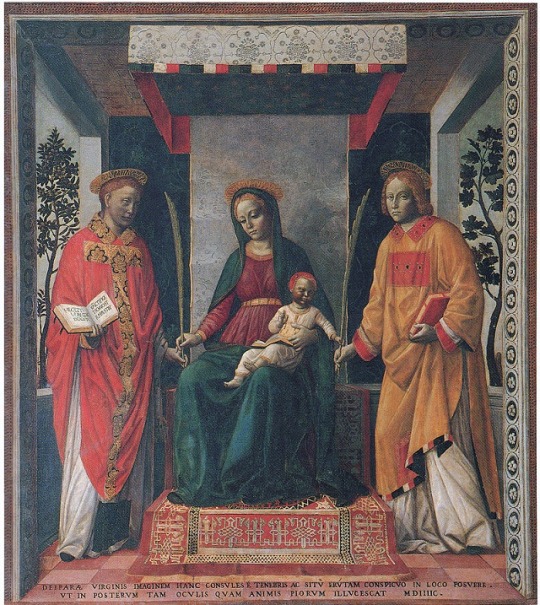
View On WordPress
#Art#Bartolomeo Roverio#Bible#Biography#Christ#Classical#CONTEMPORARY#Faustinus#Figurative#Fine Art#footnotes#Giandomenico Tiepolo#Grazio Cossali#History#Icons#mythology#Realism#Saints Jovita#Zaidan
2 notes
·
View notes
Photo

Madonna and Child by Vincenzo Foppa, European Paintings
Theodore M. Davis Collection, Bequest of Theodore M. Davis, 1915 Metropolitan Museum of Art, New York, NY
Medium: Tempera, oil, and gold on wood
http://www.metmuseum.org/art/collection/search/436311
21 notes
·
View notes
